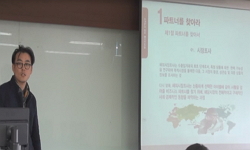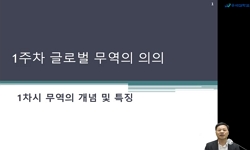Generally, Now that the tomb system is one of our cultural inherits that is most unlikely to be subject to change, the government has had difficulty in changing the current system despite its endless efforts. A close look at Korean history reveals tha...
http://chineseinput.net/에서 pinyin(병음)방식으로 중국어를 변환할 수 있습니다.
변환된 중국어를 복사하여 사용하시면 됩니다.
- 中文 을 입력하시려면 zhongwen을 입력하시고 space를누르시면됩니다.
- 北京 을 입력하시려면 beijing을 입력하시고 space를 누르시면 됩니다.

삼국시대 묘제 변화 배경에 대한 연구 = A Study on the Change of the Tomb System and its Causes in the Age of Three-Kingdom Korea
한글로보기https://www.riss.kr/link?id=A87021222
- 저자
- 발행기관
- 학술지명
- 권호사항
-
발행연도
2007
-
작성언어
-
-
주제어
전파 ; 이주 ; 무역 ; 전쟁 ; 사신 ; tomb system ; immigration ; trade ; wars ; ambassadors
-
KDC
900
-
등재정보
KCI등재
-
자료형태
학술저널
-
수록면
171-206(36쪽)
- 제공처
- 소장기관
-
0
상세조회 -
0
다운로드
부가정보
다국어 초록 (Multilingual Abstract)
Generally, Now that the tomb system is one of our cultural inherits that is most unlikely to be subject to change, the government has had difficulty in changing the current system despite its endless efforts. A close look at Korean history reveals that the tomb system underwent revision most rapidly during the period of Three-Kingdom Korea. Given this, this paper aims to find what forced the tomb system of the age of Three-Kingdom Korea to change at such a fast speed. As a result, it has been found that the tomb system was so conservative that its change was accelerated by the direct introduction of other systems. To reach this conclusion, the following hypothesis was first set up: the change of the tomb system caused by such factors as an exile of a political group, immigration of refugee groups, trade, wars, ambassadors, marriage, and religions. Efforts were made to test this hypothesis through the examination of archaeological data and relevant literature. In addition, it has been discovered that the tomb system was most rapidly modified when such a movement was led by the high-class people rather than the middle-class people. This seems to suggest that the best way to change the current burial system of the dead in short time is to urge the high-class leaders to change the burial-oriented tomb system.
동일학술지(권/호) 다른 논문
-
- 동아대학교 석당학술원
- ( Maksimenko V. Ye )
- 2007
- KCI등재
-
- 동아대학교 석당학술원
- 오은악사도 ( Enyuesitu Wu )
- 2007
- KCI등재
-
한국고대청동시저연구(韓國古代靑銅匙箸硏究) -고려시대(高麗時代)-
- 동아대학교 석당학술원
- 정의도 ( Eui Do Jung )
- 2007
- KCI등재
-
Ancient Populations of Mongolia
- 동아대학교 석당학술원
- ( D. Tumen )
- 2007
- KCI등재




 RISS
RISS KISS
KISS







